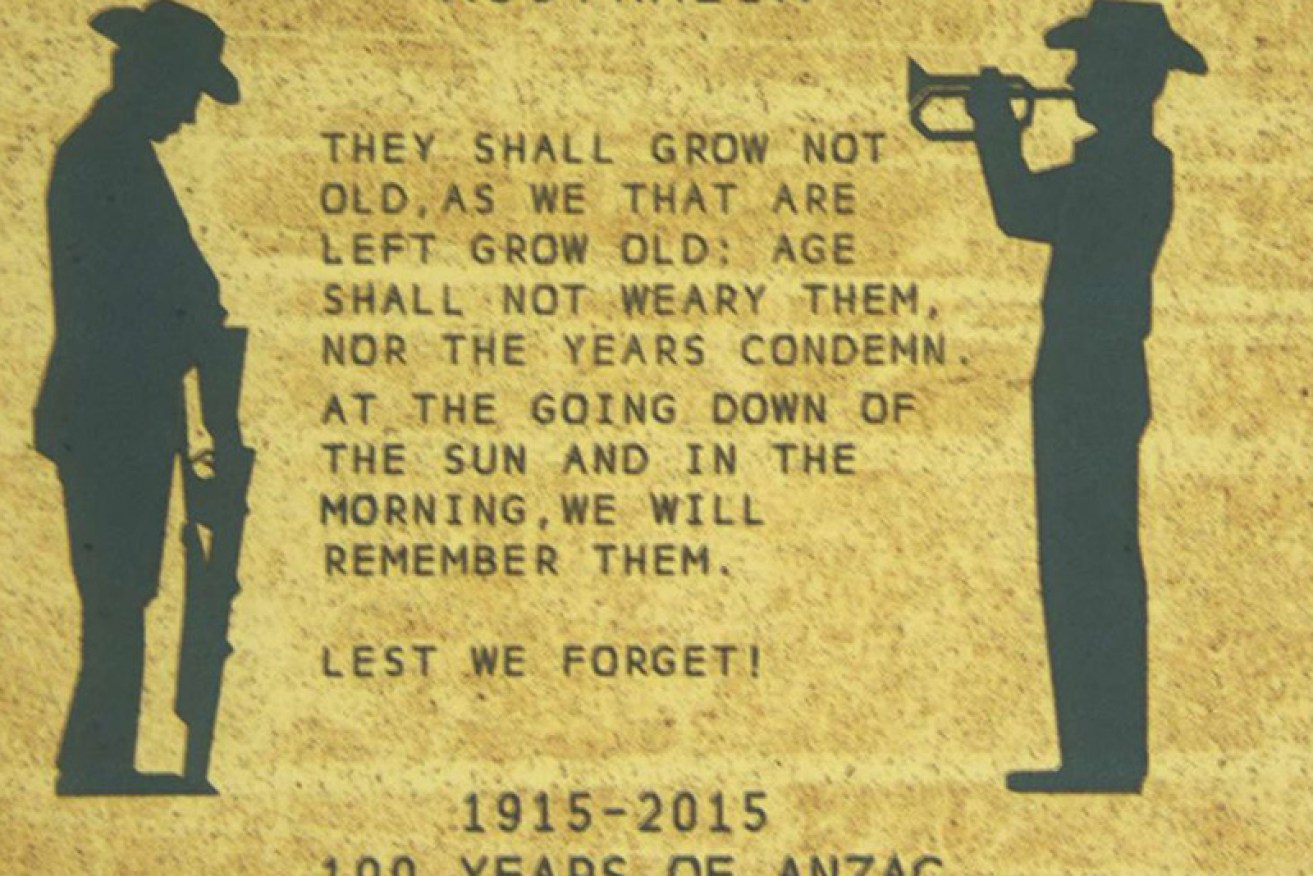Amazing Anzac etching smaller than a pin head

An engineering graduate from the Australian Defence Force Academy has made a microscopic, but no less significant, Anzac Day tribute on a piece of gold much smaller than a pin head.
Dr Evgeny Mironov was based at the Australian National University’s (ANU) Physics Department when he created the artwork commemorating Anzac Day using nanotechnology, which is widely used to repair faulty computer microchips.
• Thousands at Gallipoli as ANZAC Day nears
• AFL accused of hogging profits from ANZAC Day
• ‘Vile’ Woolworths Anzac Day ad sparks outrage
“Anzac Day is very important for Australians and the nation as a whole and for me during World War I, Russia was also fighting,” he said.
“My Russian ancestors were fighting alongside Anzacs on the eastern front.
Dr Mironov spent half a day firing atoms at a very thin layer of gold on a glass slide to create the gold etching of soldiers in a catafalque party.
The soldiers within the etching are thinner than a human hair and the bugle is the size of a red blood cell.
The pattern also features the words to the Ode of Remembrance.
“My main background is physics and mathematics and at some stage you feel really bored with all those precise formulas and you just want to create something beautiful,” Dr Mironov said.
“I really like art.”
To capture the tiny artwork for the human eye he used an electron microscope to take an enlarged picture of the etching which is one third of a millimetre by one-third of a millimetre in size.
ANU Physics Professor Chennupati Jagadish said the artwork was tiny.
“We have been thinking about Anzac Day and what contributions the Anzacs made to our country,” Professor Jagadish said.
“Dr Mironov took a piece of glass and then he coated the glass with gold and then he created a pattern on the gold using a machine which etches away the material using ion beams.

Dr Evgeny Mironov also created a microscopic etching to mark International Women’s Day.
“By doing the pattern transfer to this gold, coating whatever has been created you can get very fine features of micrometre size and even sub-micrometre size.
“So tiny, tiny, tiny!”
According to Professor Jagadish the nanotechnology artwork is among the smallest of its kind in the world.
“It is a tiny tribute to those that have contributed to our country 100 years back,” he said.
Nanotechnology is engineering at the atomic and molecular scale and this technology is increasingly being applied to art.
“When you go to the nano scale the properties of materials change,” Professor Jagadish said.
“We are interested in studying how we can use them to make the next generation photonics and electronics and a range of devices.”
For the technically inclined, the tiny artwork has the dimensions of 375 x 375 micrometres and the smallest feature is just 1 micrometre in diameter.
A human hair is about 70,000 nanometres in length and there are 1000 micrometres in 1 nanometre.








